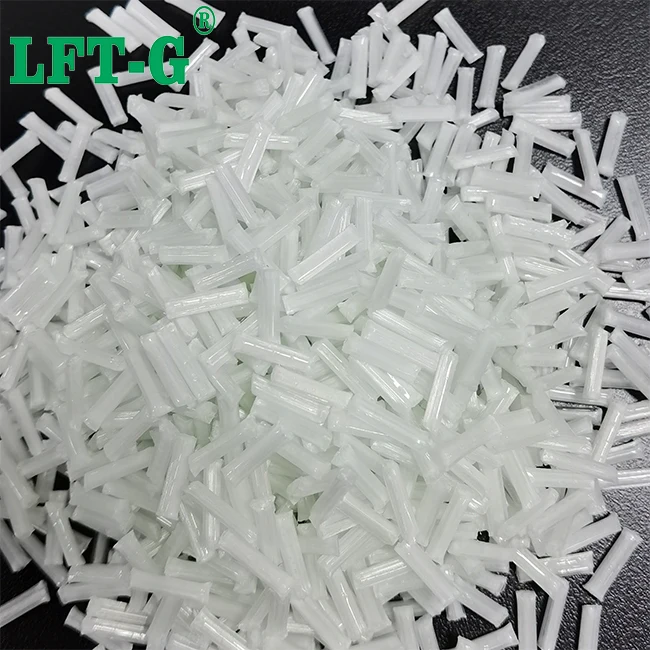現代の産業分野では、
ガラス繊維強化ポリプロピレン(PP/GF)
は、低密度、優れた耐熱性と耐クリープ性、そして高いコストパフォーマンス比を備え、次のような業界で「新星」となっています。
電子機器、航空宇宙、自動車製造
この材料は、
軽量・薄肉部品
として
鉄鋼や従来のエンジニアリングプラスチックの代替品
。
しかし、ポリプロピレン自体は可燃性材料であり、限界酸素指数(LOI)は約17.0%に過ぎません。燃焼時には大量の炎滴が発生し、かなりの熱を放出します。ガラス繊維(GF)を添加することで、この滴下現象はある程度緩和されますが、GFのいわゆる「ウィック効果」により燃焼時間が長くなり、発熱量も増加します。そのため、安全性が重視される用途では、PP/GFの難燃処理が不可欠です。
かつて広く使用されていた臭素・アンチモン系難燃剤は、燃焼時に発生する有毒な煙のために、国内外で規制の対象となっていることは注目に値します。例えば、デカブロモジフェニルエーテルなどの臭素系難燃剤はすでに禁止されています。
代替として、ハロゲンフリーのリン・窒素系膨張性難燃剤システムは、環境への配慮とコスト面での優位性から、ポリオレフィン分野で注目を集めています。例えば、ピロリン酸ピペラジン(PAPP)は、リンと窒素元素に加え、豊富な水酸基も有するため、膨張性難燃剤システムにおいて「酸源」と「炭素源」として同時に作用します。本研究では、PAPPをメラミンポリリン酸(MPP)と混合し、PAPPベースの膨張性難燃剤を調製しました。一定量の難燃剤を投入すると、
PP/GF複合材料の性能に対するガラス繊維含有量の影響を体系的に調査した。

GF 含有量は材料の性能にどのように影響しますか?
1. 難燃性の大幅な向上(GF < 30%)
PP/GF複合材料の難燃性は、ガラス繊維(GF)含有量の増加に伴い向上します。GF含有量の増加はPPマトリックスの割合を低減することを意味し、熱分解時の可燃性破片の発生を低減します。同時に、GFはメルトフローレートを低下させることで、薄いサンプルにおける滴下問題を効果的に軽減し、垂直燃焼試験への合格を容易にします。また、難燃剤が「固相炭化」メカニズムによって形成する炭素層は、高温のGF残留物によって破壊されることなくサンプル表面をしっかりと覆い、熱と酸素を遮断し、可燃性揮発物質の放出を低減します。
2. 熱安定性の変化
GFをポリマー材料に組み込むことで、複数の物理的特性を効果的に最適化できます。GFは複合材料の寸法安定性を大幅に向上させ、さまざまな環境条件下での変形しにくくします。一方、材料の熱変形温度(HDT)が著しく上昇し、耐高温性が大幅に向上します。GFの組み込みは材料の熱安定性を変化させます。難燃性PP/GF複合材料の初期熱分解温度は低下しますが、高温での安定性は大幅に向上します。実験データによると、GF含有量が25%に増加すると、サンプル#4は700℃で39.4%の炭化残留率を達成します。これは、高温下では可燃性ガスの放出が大幅に減少し、不燃性の固体炭化物の形成が増えることを示しています。空気雰囲気下では、熱酸化分解により、初期分解温度は窒素雰囲気下よりも低くなります。しかし、高温では、GF 含有量が異なるサンプルの炭化残留物は GF を含まないサンプルよりも高いままです。これは、GF が本質的に高温で安定しており、分解しにくいためと考えられます。
3. 燃焼性能への二重の効果
難燃剤FR-1420は、外部からの熱放射を受けると、膨張炭化により試験片表面に断熱炭化層を形成します。実験結果によると、GFを含まないサンプル#1では炭化層の厚さが約2.5cmに膨張しましたが、GFを15%含むサンプル#2では炭化層の厚さが約6.2cmに増加しました。しかし、GF含有量をさらに増やすと、炭化層の厚さは約5.0cmに減少しました(サンプル#4)。この現象は、GFの高い熱安定性によって説明できます。GFは炭化膨張を支える「炭化骨格」として機能しますが、高温下で過剰なGFが残留すると、炭化の成長が阻害されます。
注目すべきは、GFの配合がピーク発熱速度(PHRR)などの主要な燃焼パラメータに影響を与えなかったことです。これは、全体的な火災安全性能が良好に維持されていることを示しています。さらに、GFの不活性性とPPマトリックスの割合の低減により、燃焼中の可燃性揮発物質の放出が減少し、高温でも不燃性の固体残留物が多く残りました。質量-時間曲線が示すように、GFを含むサンプルは高温での残留質量が増加し、発熱と煙の発生が少なくなりました。火災成長速度指数(FIGRA)や最大平均発熱速度(MAHRE)などの火災安全指標には大きな変化は見られませんでした。
結論
ハロゲンフリー難燃剤FR-1420は、PP/GF複合材料において優れた難燃効果を発揮します。同じ難燃剤含有量の場合、GF含有量が多いほど難燃性が向上します。
GF は初期の熱分解温度を下げると同時に、高温での熱安定性を高めます。
コーン熱量測定テストでは、GF は「炭化骨格」として機能し、炭化膨張の厚さを増加させながら総熱放出 (THR) と総煙生成 (TSP) を減らし、PP/GF 複合材料の耐火性能を大幅に向上させます。